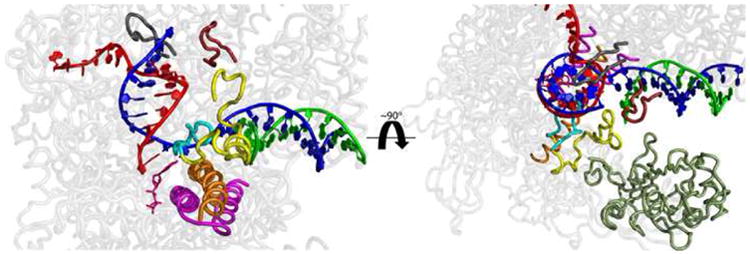Figure 1.

Important structural elements involved in translocation and the nucleotide addition cycle. Side (left) and top (right) views of the β and β′-subunits (transparent grey) of the T. aquaticus transcription elongation complex (PDB: 2O5J) are shown. Several key structural elements are highlighted. These structures have been shown to either adopt multiple conformations in crystal structures or to be involved in translocation and/or the nucleotide addition cycle, based on mutational analysis [6]. The template and non-template DNA strands are highlighted in green and blue, respectively. These strands are separated at fork loop 2 (β413-441; yellow). The βD-loopII (β442-454), which extends from fork loop 2, is cyan. The nascent RNA chain is red. The DNA and RNA hybrid are separated at the lid (β′525-538; grey) and rudder (β′580-600; dark red). The catalytically essential trigger loop (β′1225-1265; magenta) is located below the bridge helix (β′1066-1095; orange) and is shown interacting with a nucleotide (pink) in the catalytic site. The pincer, (β140-332) which closes down on the downstream DNA, is shown in dark green and is omitted on the left for clarity. All residue numbers correspond to T. aquaticus RNAP.
